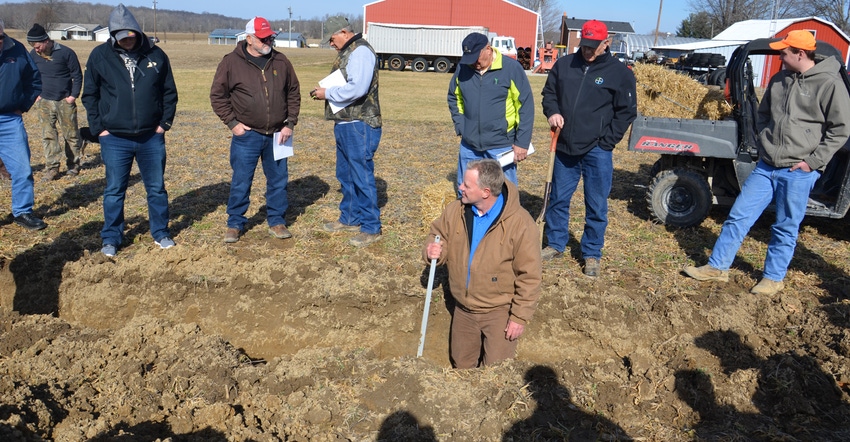
Can cover crop roots sometimes be found in tile lines and even plug tiles?
Matthew Zupancic doesn’t duck the question. His answer is yes. He has dealt with a few instances where roots, usually dead ones, plugged tile.
But he also adds this: “Is it going to stop us from growing cover crops in the future? No. The benefits from cover crops are too great. I love using cover crops, and we’re going to keep doing so.”
In fact, Zupancic, and his dad, John, Morgantown, Ind., have cover crops growing this spring. If the field was in corn last year, it’s likely covered with cereal rye. If it was in soybeans, there’s probably residue left from oats, plus green crimson clover.
Roots and tile
Two years ago, Zupancic let rye grow longer than usual in some fields so he could bale it for straw before planting corn. Later they noticed a few spots where water sat on top instead of infiltrating into the soil, even though the field was tiled.
“We dug up those spots and found the tile was usually plugged with dead roots,” he recalls. “Fixing it requires cutting out a section of tile and splicing in a new section. It’s not fun, but it’s not enough of a problem to scare us away from using a practice that works.”
Zupancic discovered that the plugged spot was often in a lateral line not far from where the lateral joined a main. After talking with Lee Weddle, a neighbor who installs tile, he believes there is an explanation.
“We both agree that you usually see it where there’s a grade break in the tile line,” Zupancic says. “Water either is speeding up or slowing down. That likely lets roots settle out instead of washing through the system. In our case, only a few lines plugged — certainly not every line.”
A field where Zupancic experienced problems was installed with a tile plow. Weddle uses a trencher, and he has also seen instances where roots plug a tile. It’s not always cover crop roots, either, Weddle notes.
Root benefits
When the Zupancics hosted a field day recently, they dug soil pits so visitors could see what is happening below the surface when you grow cover crops on top. Tom Held, a district conservationist with the Natural Resources Conservation Service, based at Vincennes, Ind., volunteered to explore the pits.
He checked for roots in three pits on three different soil types, including a very wet soil. He found roots headed downward in every case.
Since the fields are typically no-tilled, he also found earthworm channels, and even an earthworm or two.
“We like the benefits of what we’re doing, and we intend to stay with it,” Zupancic says.
About the Author(s)
You May Also Like




